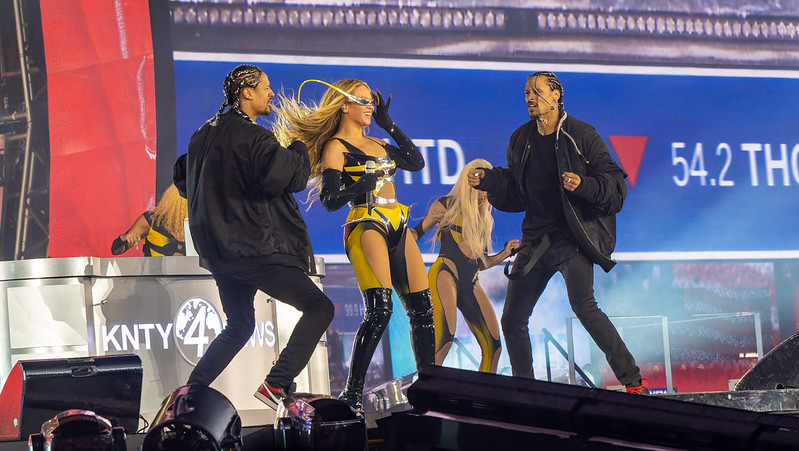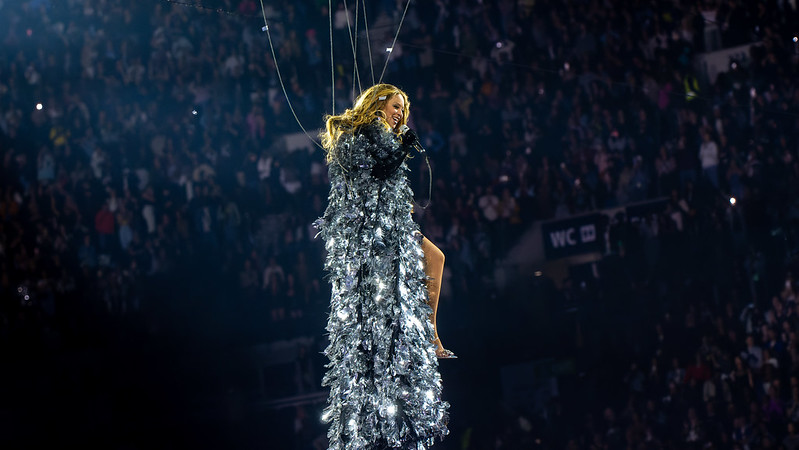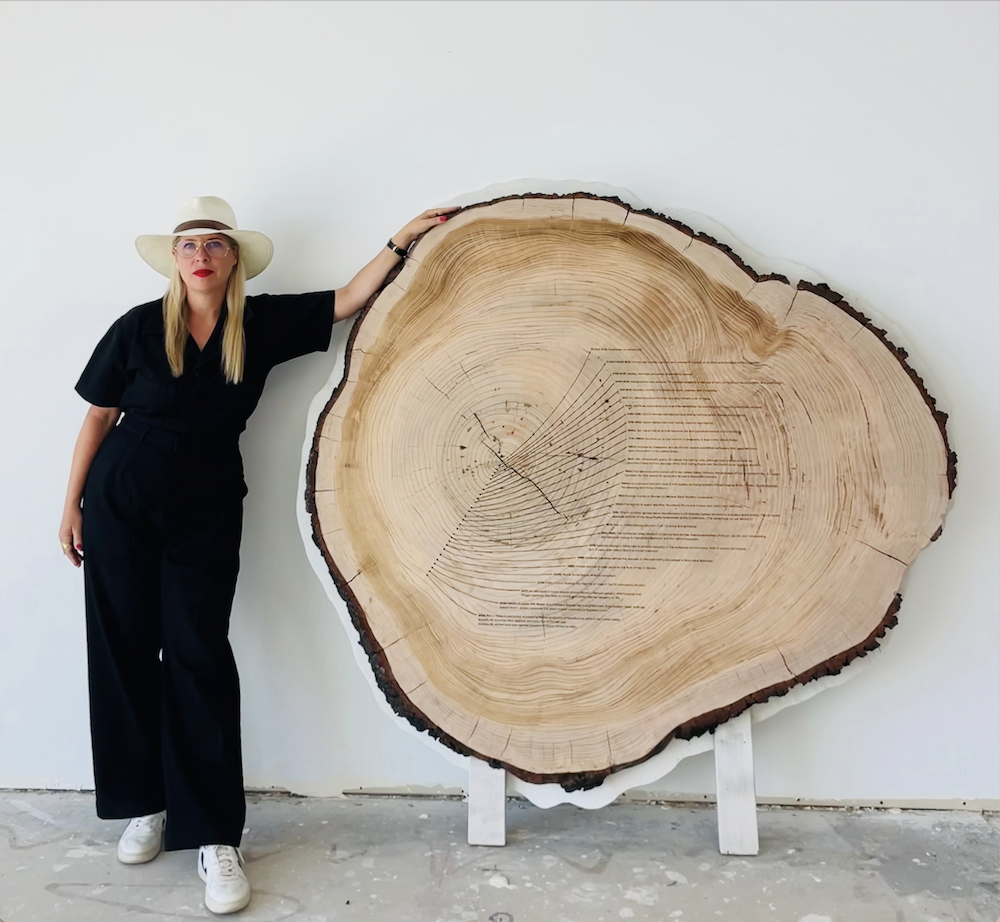Renaissance: A Film by Beyoncé is about how to shine your light, how to give others shine, and how to sit in darkness until the light comes again.

In one of several behind-the-scenes clips in Beyoncé Knowles-Carter’s fifth self-directed film, Renaissance, the pop star describes at length the significance of light direction: how to shine it on stage and through different parts of a stadium, how to command its glow on her body, and perhaps most subversively, how to absorb the dark in the creation of contrasts. In essence, Renaissance is about how to shine your light, how to give others shine, and how to sit in darkness until the light comes again. What a message to deliver in this season of light!
And shining the light on others is the highlight here, as her many cameras at the live tours captured the spectacularly-clad bodies and the sheer ecstasy and joy of the Black people, women and femmes, LGBTQIA+, and various other folk across the different gender, racial, ethnic and national spectrums comprising her Beyhive fans in the audience. The spectacle is made even more poignant when behind-the-scenes cameras reveal the full “family” of tech crew, production and costume designers, choreographers, and even members of her actual family—including her parents, husband and three children—who are committed to realizing this vision of shimmering light.
Beyoncé has declared in her music, her live shows, and the film that she was dedicated to creating a “safe space” for those most marginalized in our communities to feel seen and heard and “liberated.” She literally elevated the voices of Black queer artists like Kevin Jz Prodigy, Ts Madison, Big Freedia and Kevin Aviance while paying touching tribute to the memory of her “Uncle Johnny,” a gay Black man who made her “prom dress” (which she shows off in the film) and introduced her to the house music interpolated across the Renaissance album.
I might have missed the live tour, but I did take my seat at my IMAX movie showing—where the music vibrated loudly and through my entire body, while the visuals absorbed me into a vortex of space and time. The film was a powerful portal that transported me right into that safe space so meticulously crafted by the hands of thousands under the direction of one powerful Black woman.
The “Lift Off” scene that follows “Alien Superstar”—in which Beyoncé interpolates famed Black astronomer Neil Degrasse Tyson’s comments on space and time with intergalactic space imagery—simply blew my mind and, for a split second, made me feel like I truly was an “alien superstar.”
That this bit of escapism immediately precedes Beyoncé’s behind-the-scenes rumination on being a working mother and engaging with time differently as she observes the rapid growth of her three children, is a reminder that the pop star constantly works in contrasts: light versus dark, escapism versus realism, work versus motherhood, artistry versus commercialism. Her effortless assemblage of these different elements demonstrates that she is not simply an artist or businesswoman: She is a creative genius.

The vision is often high camp. Her literal “queen bee” costuming for “America Has a Problem” is meta levels of theatricality. And when sitting atop a disco horse and “levitating” with high wires to achieve “elevation,” how can we not appreciate the Queen Bey’s wink-wink sense of humor here at the hyperbolic levels of superstardom bestowed on her?
On a more serious note, this playful vision also gestures to transcendence and escapism—a much-needed remedy after two years of pandemic lockdown and our current tensions with overseas wars and occupation.
There is no doubt that pop star Beyoncé Knowles-Carter is in full command of her vision. Not only does she direct the lighting of her live shows in the Renaissance World Tour, she also commands all elements: from music to choreography, to the technical crew, costuming, and even her worldwide audience. (The “mute” challenge rendering a full stadium of cheering fans silent is truly something to behold.)
To then transfer that live vision to a concert film documentary “written, produced and directed” by herself (the editing alone of different scenes from the 50-plus world tour is awards-worthy) has solidified the pop star as a bonafide filmmaker among her many other roles: vocalist, entertainer, artist, entrepreneur, mother, wife, sister, friend, cultural leader.
Her declarative “written, produced and directed by” herself statement even harkens back to the assertions of poetry by Phillis Wheatley “written by herself.” Then, as now, Black women’s creativity was often questioned, so certain was the general public in the belief that we, as Zora Neale Hurston once observed, were “the mules of the world” and, therefore, incapable of doing something as transcendent as creating art.
We may have evolved from those early years when Black women were thought incapable of being creative, but even now, Beyoncé’s creative abilities are often undermined: disavowed with ideas that she is “controlled” by others in the machinery, or diminished when numerous individuals are credited in her musical projects, or what Birgitta Johnson has called her “collaboration tax,” designed to suggest that the pop star is completely dependent on the musicality of others.
That Beyoncé feels she must assert her artistry, like Phillis Wheatley, is a reminder of this added burden of Black women in public positions. It is no wonder she harnesses the power of mother goddess imagery to aggrandize her persona and to shut down such noisy dismissals.
Beyoncé’s work is a welcome triumph and affirmation of feminist art and expression.
My favorite imagery from Renaissance is her self-referential “center of the universe” depiction of her darkened face illuminated by what appears to be revolving planets (which also double as the camera lights that go “pop pop pop pop pop pop”). Her celebrity is on par with the sun standing at the center of our universe—which is a reminder of how she is a source of light, a theological rendering of the sacred, a scientific reminder that we are made of what Carl Sagan calls “star stuff.”
Such imagery effortlessly weaves into the machinery of her Metropolis-based cyborg imagery, a suggestion of how our labor is industrialized. The film cuts from the cyborg to highlight the tons of steel that the tour’s crew members—many of whom are women that Beyoncé hired—have assembled to create the magic of the live tours. This nexus between labor and magical illusions brings home the point of not just celebrating the art but the process of creating art. This work also extends into the motif of working women—highlighted not just by the many women she hired for her tour but also through the theme of motherhood, whether in the visual artistic imagery of goddesses, the visibly pregnant trumpeter in her band, or Beyoncé herself interacting with her children and her own mother Tina Knowles.
By the time the cyborg is birthed from the womb (a digital rendering of the circular live stage that also transitions into an all-seeing eye in other parts of the performance) and Beyoncé escapes her robotic costuming to assert her transhuman self, she has evolved the meanings of her body beyond the industrial and toward the sacred. This is a powerful Afrofuturistic vision for Black feminism.
In a year that has witnessed women driving culture and the economy—with Beyoncé doing much of the heavy-lifting, along with her musical peer Taylor Swift—women’s power is a front-and-center talking point, especially in the ways this can transform into political and social power for all women, and not just for a certain few generating billions of dollars that line their own pockets.
Beyoncé’s Renaissance tour is now in the top 10 of the highest grossing tours of all time, generating half a billion dollars, and her film documenting this tour broke the record for the highest grossing post-Thanksgiving weekend film at the box office, with a gross of $21 million. While this is considerably smaller than reigning box-office queen Taylor Swift, these numbers are more than impressive. Indeed, in a year in which big-screen movies have featured more women—and women of color specifically—taking center stage, Beyoncé’s work is a welcome triumph and affirmation of feminist art and expression.

This of course has not spared her from various social-media controversies—from accusations that she has bleached her skin, to political demands that she involve herself in foreign policy issues by making public statements on wars and occupation. This is not to say that celebrities with star power like Beyoncé should not be held accountable for their art and other public expressions, especially when they have made public statements in the past. But, this is an opportunity to really think about the meanings and uses of art.
Her lessons on lighting and light direction are especially instructive here. Do we direct the light to give certain marginalized people and victims their well-deserved shine? Or, are we concerned less with others getting shine and more with blasting glaring lights on a public figure to reveal her wrinkles, celluloid, blemishes and scars and pop the illusion of perfection? What is our true aim here?
In this season of light, we have a tremendous opportunity to observe a Black woman in her prime at 42 years old making art, working at her craft, raising her children, and surrounded by a strong network. More importantly, we are witnessing how she is able to strive doing these things and provide models for how we too can achieve similar goals.
In the end, she has entertained us with a valuable work of art and a sense of escapism, a reprieve from the darkness even as we sit with the dark. Our art can provide respite from our struggles, or it can articulate the struggles in ways that inspire us to move forward. This film is a testament to how many of us can find inspiration in a Black woman’s art and process, especially in the ways that we create art to sustain ourselves and our communities. Beyoncé has transcended, and so can we.
Renaissance: A Film by Beyoncé is in theaters now. Find tickets here.
Up next:
U.S. democracy is at a dangerous inflection point—from the demise of abortion rights, to a lack of pay equity and parental leave, to skyrocketing maternal mortality, and attacks on trans health. Left unchecked, these crises will lead to wider gaps in political participation and representation. For 50 years, Ms. has been forging feminist journalism—reporting, rebelling and truth-telling from the front-lines, championing the Equal Rights Amendment, and centering the stories of those most impacted. With all that’s at stake for equality, we are redoubling our commitment for the next 50 years. In turn, we need your help, Support Ms. today with a donation—any amount that is meaningful to you. For as little as $5 each month, you’ll receive the print magazine along with our e-newsletters, action alerts, and invitations to Ms. Studios events and podcasts. We are grateful for your loyalty and ferocity.





